The Biblical Manuscripts in the Freer Collection, a collection of nine biblical manuscripts, date from the 3rd to 6th centuries. Most of the manuscripts are written in Greek, four in Coptic. They are important witnesses of the history of the text of New Testament and Septuagint. The collection was established by Charles Freer (1854–1919), an industrialist from Detroit, Michigan and is held at the Freer Gallery of Art in Washington D.C.
All these manuscripts were purchased at the beginning of the 20th century in Egypt by Charles Freer. Four manuscripts were bought on 19 December 1906 from an Arab dealer named Ali in Giza, not far from Cairo. Freer paid £1,600. Upon the next expedition to Egypt, Freer met with Ali and acquired a Coptic codex of the Psalms and the earliest papyrus codex of the Minor Prophets.
Formerly these manuscripts were held in Detroit, Michigan, in Freer's private collection. He gave his art collections to the United States together with funds for a building to house them. The building cost $1,000,000, all of which was paid by Freer. [1]
The Freer Gallery of Art was opened in 1923.

The Bible is a collection of religious texts and scriptures that are held to be sacred in Christianity, and partly in Judaism, Samaritanism, Islam, the Baháʼí Faith, and other Abrahamic religions. The Bible is an anthology originally written in Hebrew, Aramaic, and Koine Greek. The texts include instructions, stories, poetry, prophecies, and other genres. The collection of materials that are accepted as part of the Bible by a particular religious tradition or community is called a biblical canon. Believers in the Bible generally consider it to be a product of divine inspiration, but the way they understand what that means and interpret the text varies.
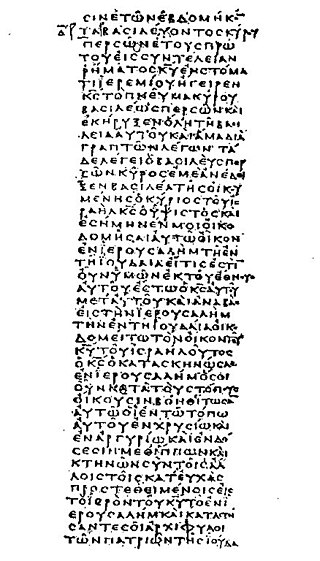
The Septuagint, sometimes referred to as the Greek Old Testament or The Translation of the Seventy, and often abbreviated as LXX, is the earliest extant Greek translation of the Hebrew Bible from the original Biblical Hebrew. The full Greek title derives from the story recorded in the Letter of Aristeas to Philocrates that "the laws of the Jews" were translated into the Greek language at the request of Ptolemy II Philadelphus by seventy-two Hebrew translators—six from each of the Twelve Tribes of Israel.

The Codex Vaticanus, is a manuscript of the Greek Bible, containing the majority of the Old Testament and the majority of the New Testament. It is designated by siglum B or 03 in the Gregory-Aland numbering of New Testament manuscripts, and as δ 1 in the von Soden numbering of New Testament manuscripts. It is one of the four great uncial codices. Along with Codex Alexandrinus and Codex Sinaiticus, it is one of the earliest and most complete manuscripts of the Bible. Using the study of comparative writing styles (palaeography), it has been dated to the 4th century.

Textus Receptus refers to the succession of printed Greek New Testament texts starting with Erasmus' Novum Instrumentum omne (1516) and including the editions of Stephanus, Beza, the Elzevir house, Colinaeus and Scrivener.
The Ketuvim is the third and final section of the Hebrew Bible, after the Torah ("instruction") and the Nevi'im "Prophets". In English translations of the Hebrew Bible, this section is usually titled "Writings" or "Hagiographa".
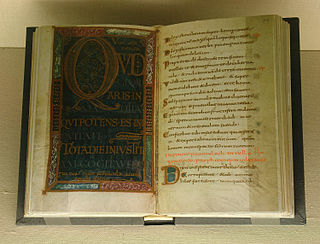
A psalter is a volume containing the Book of Psalms, often with other devotional material bound in as well, such as a liturgical calendar and litany of the Saints. Until the emergence of the book of hours in the Late Middle Ages, psalters were the books most widely owned by wealthy lay persons. They were commonly used for learning to read. Many psalters were richly illuminated, and they include some of the most spectacular surviving examples of medieval book art.

The Freer Gallery of Art is an art museum of the Smithsonian Institution in Washington, D.C. focusing on Asian art. The Freer and the Arthur M. Sackler Gallery together form the National Museum of Asian Art in the United States. The Freer and Sackler galleries house the largest Asian art research library in the country and contain art from East Asia, South Asia, Southeast Asia, the Islamic world, the ancient Near East, and ancient Egypt, as well as a significant collection of American art.

The Codex Alexandrinus, designated by the siglum A or 02, δ 4, is a manuscript of the Greek Bible, written on parchment. Using the study of comparative writing styles (palaeography), it has been dated to the fifth century. It contains the majority of the Greek Old Testament and the Greek New Testament. It is one of the four Great uncial codices. Along with Codex Sinaiticus and Vaticanus, it is one of the earliest and most complete manuscripts of the Bible.
The Psalms of Solomon is a group of eighteen psalms, religious songs or poems, written in the first or second century BC. They are classed as Biblical apocrypha or as Old Testament pseudepigrapha; they appear in various copies of the Septuagint and the Peshitta, but were not admitted into later scriptural Biblical canons or generally included in printed Bibles after the arrival of the printing press.

Codex Washingtonianus, Codex Washingtonensis, Codex Freerianus, also called the Washington Manuscript of the Gospels, The Freer Gospel and The Freer Codex, is a Greek uncial manuscript of the four Gospels, written on parchment. It is designated by W or 032 in the Gregory-Aland numbering of New Testament manuscripts, and ε014 in the von Soden numbering of New Testament manuscripts. Using the study of comparative writing styles (palaeography), it has been dated to the 4th or 5th century. The manuscript has some gaps. The manuscript was among a collection of manuscripts bought by American industrialist Charles Lang Freer at the start of the 20th century, and first published by biblical scholar Henry A. Sanders.
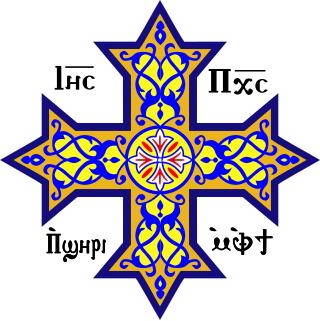
There have been many Coptic versions of the Bible, including some of the earliest translations into any language. Several different versions were made in the ancient world, with different editions of the Old and New Testament in five of the dialects of Coptic: Bohairic (northern), Fayyumic, Sahidic (southern), Akhmimic and Mesokemic (middle). Biblical books were translated from the Alexandrian Greek version.
A biblical manuscript is any handwritten copy of a portion of the text of the Bible. Biblical manuscripts vary in size from tiny scrolls containing individual verses of the Jewish scriptures to huge polyglot codices containing both the Hebrew Bible (Tanakh) and the New Testament, as well as extracanonical works.
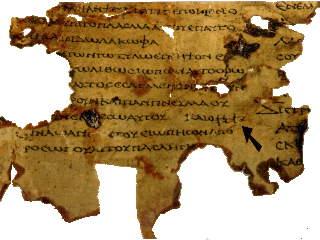
The earliest surviving manuscripts of the Septuagint, an ancient translation of the ancient Hebrew Torah into Koine Greek, include three 2nd century BCE fragments from the books of Leviticus and Deuteronomy and five 1st century BCE fragments of Genesis, Exodus, Leviticus, Numbers, and Deuteronomy, only. The vast majority of Septuagint manuscripts are late-antiquity and medieval manuscript versions of the Christian Greek Old Testament tradition.

Coptic literature is the body of writings in the Coptic language of Egypt, the last stage of the indigenous Egyptian language. It is written in the Coptic alphabet. The study of the Coptic language and literature is called Coptology.

Codex Freerianus, designated by I or 016, α 1041, also called the Washington Manuscript of the Pauline Epistles, is a 5th-century manuscript in an uncial hand on vellum in Greek.

Uncial 070, ε 6 (Soden), is a Greek-Coptic diglot uncial manuscript of the New Testament. Palaeographically it has been assigned to the 6th century.

Codex Glazier, designated by siglum copG67, is a Coptic uncial manuscript of the New Testament on parchment. It is dated palaeographically to the 4th or 5th century. Textually it is very close to Greek Codex Bezae.

Rahlfs 1219, also known as the Washington Manuscript of the Psalms and the van Haelst 83, is a Greek Septuagint manuscript containing the text of Psalm 1:4-146:9a, 149:2b-151:6, plus the first 6 verses of the book of Odes. It is made of parchment which has survived in a fragmentary condition. Using the study of comparative writing styles (palaeography), it has been assigned to the 5th Century CE. At some point before the 10th century CE, the last few pages of the manuscript were replaced with those from another codex.
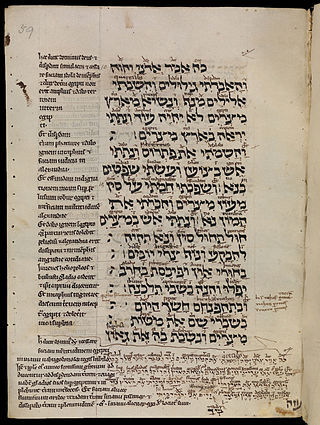
Ezekiel 16 is the sixteenth chapter of the Book of Ezekiel in the Hebrew Bible or the Old Testament of the Christian Bible. This book contains prophecies attributed to the prophet/priest Ezekiel, and is one of the Books of the Prophets. Biblical scholar R. E. Clements calls this chapter "an Old Testament parable of the prodigal daughter", describing a shocking illustration of ungrateful Jerusalem in contrast to God's enduring love to her. This chapter is often linked to Ezekiel 23, which deals with two daughters, symbolizing the Kingdoms of Israel and Judah.

Early translations of the New Testament – translations of the New Testament created in the 1st millennium. Among them, the ancient translations are highly regarded. They play a crucial role in modern criticism of New Testament's text. These translations reached the hands of scholars in copies and also underwent changes, but the subsequent history of their text was independent of the Greek text-type and are therefore helpful in reconstructing it. Three of them – Syriac, Latin, Coptic – date from the late 2nd century and are older than the surviving full Greek manuscripts of the New Testament. They were written before the first revisions of the Greek New Testament and are therefore the most highly regarded. They are obligatorily cited in all critical editions of the Greek text-type. Translations produced after 300 are already dependent on the reviews, but are nevertheless important and are generally cited in the critical apparatus. The Gothic and Slavic translations are rarely cited in critical editions. Omitted are those of the translations of the first millennium that were not translated directly from the Greek original, but based on another translation.